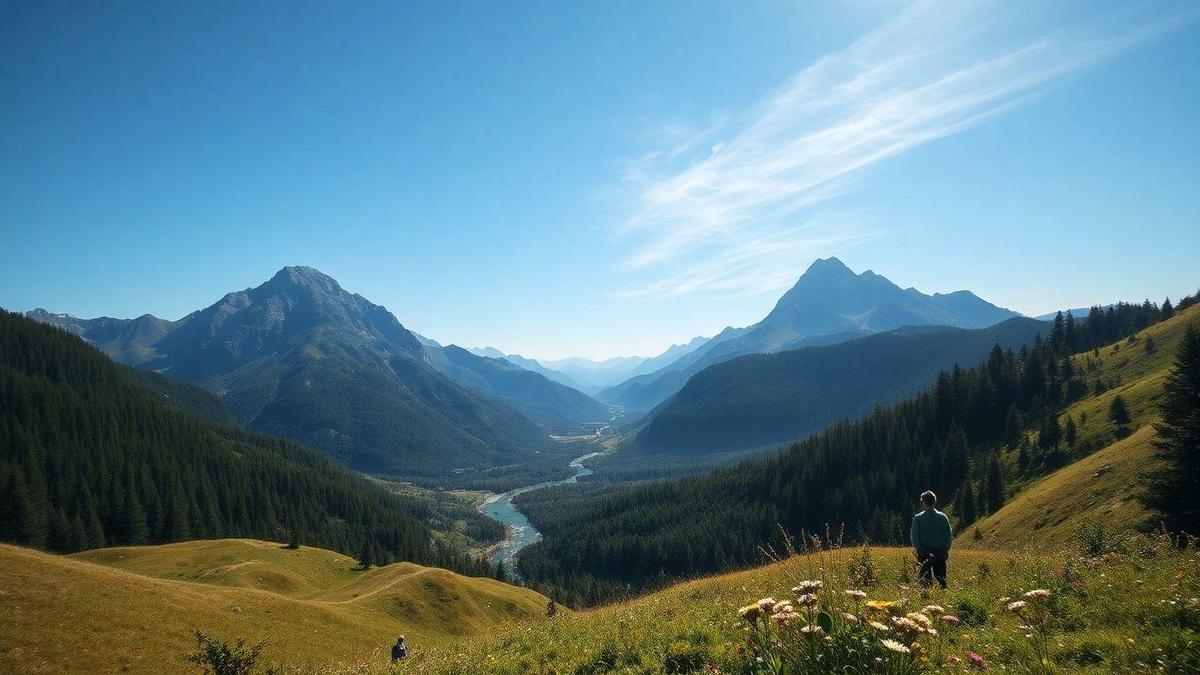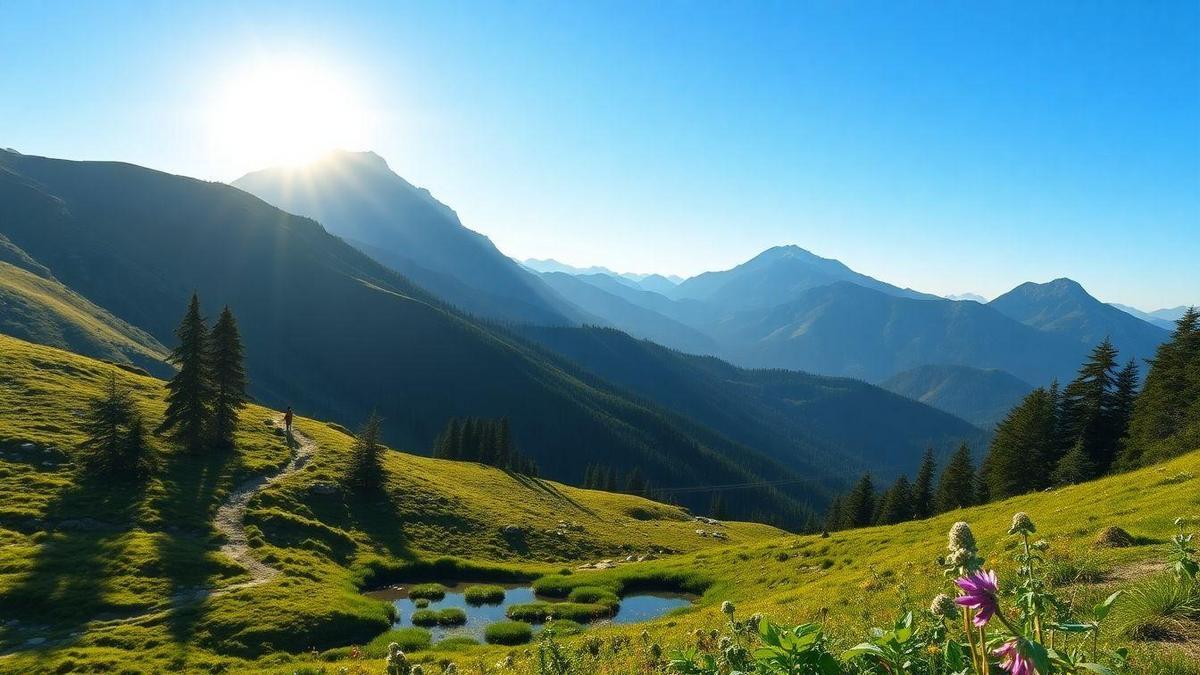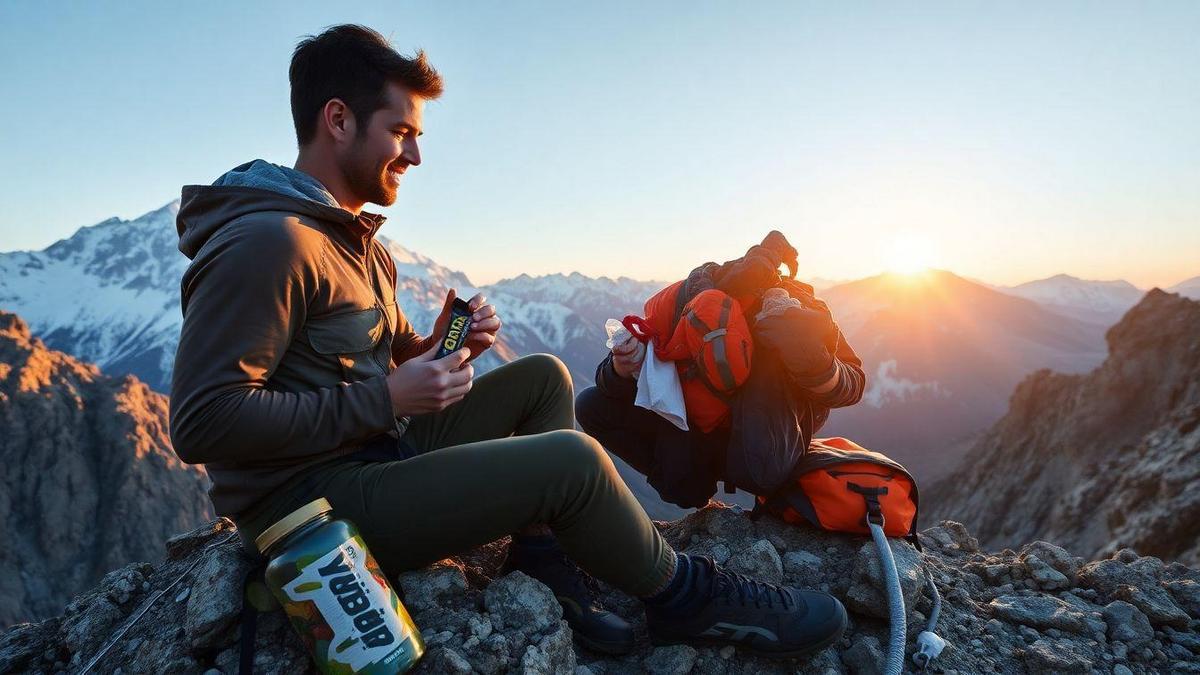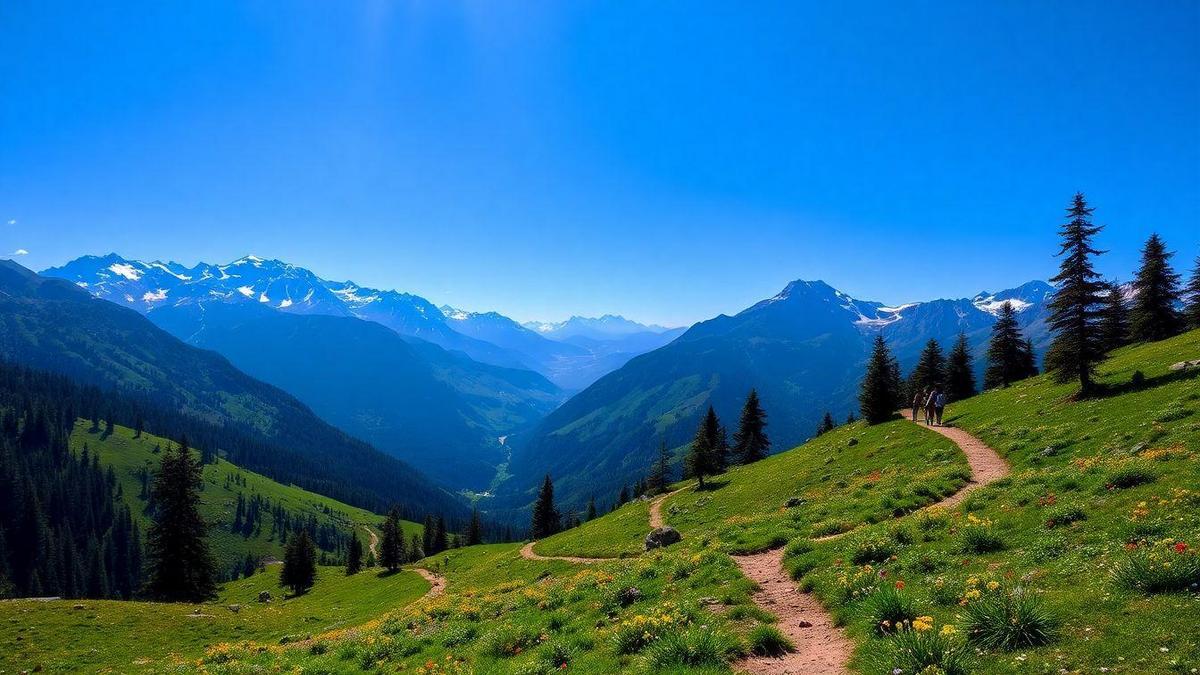
Discovering Remote Mountains for Solitude
Benefits of Climbing Remote Mountains
Climbing remote mountains can be a life-changing experience. Here are some benefits you might find:
- Peace and Quiet: Away from the noise of the city, you can hear the wind and the rustle of leaves.
- Fresh Air: The air is cleaner and crisper in the mountains, making every breath feel refreshing.
- Physical Fitness: Hiking helps you stay fit and strong. You’ll feel great after a day of climbing.
- Mental Clarity: Being in nature can help clear your mind. You may find answers to questions that have been bothering you.
Why Solitude in Nature Matters
Solitude in nature is important for your well-being. Here’s why:
- Recharge Your Mind: Just like your phone needs charging, your mind needs time to rest. Nature offers that chance.
- Connect with Yourself: When you are alone, you can think deeply about your life and goals. It’s a time for personal growth.
- Creativity Boost: Many artists and writers find inspiration in solitude. You might discover new ideas while enjoying the quiet.
Finding Peace in Isolation
Finding peace in isolation can feel like a warm hug on a cold day. Here are some ways to embrace that feeling:
| Activity | Description |
|---|---|
| Meditation | Sit quietly and focus on your breath. |
| Journaling | Write down your thoughts and feelings. |
| Nature Observation | Watch the wildlife or the changing landscape. |
Whether you sit by a stream or climb a peak, you can find peace in the quiet moments. It’s in these times that you can truly connect with yourself and the world around you.
The Best Remote Peaks for Solitude
Top Remote Mountains to Explore
If you’re yearning for some peace and quiet, there are several remote mountains that offer a perfect escape. These peaks are not just about the climb; they provide a chance to connect with nature. Here are some top choices:
| Mountain Name | Location | Elevation (ft) | Best Time to Visit |
|---|---|---|---|
| Mount Rainier | Washington, USA | 14,411 | July – September |
| Mount Shasta | California, USA | 14,179 | June – August |
| Pikes Peak | Colorado, USA | 14,115 | June – September |
| Granite Peak | Montana, USA | 12,799 | July – August |
| Kings Peak | Utah, USA | 13,528 | July – September |
These mountains are not just tall; they are isolated and offer a chance to breathe in the fresh air without the noise of crowds.
Unique Features of Secluded Climbing Spots
When you climb these remote peaks, you will find features that make the experience truly special. The solitude allows you to hear the sounds of nature, like the rustle of leaves or the call of birds. Here are some features that stand out:
- Less Crowds: Enjoy the trails without bumping into other hikers.
- Wildlife Encounters: Spot animals in their natural habitats.
- Stunning Views: Experience breathtaking sights that few have seen.
These features create a sense of wonder and connection to the outdoors that is hard to find elsewhere.
Hidden Gems for Nature Lovers
If you want to explore even more, consider these hidden gems that offer a quieter experience:
- Cathedral Peak – A stunning granite formation in California.
- Mount Olympus – A remote peak in Washington, surrounded by lush forests.
- Mount Eolus – A lesser-known summit in Colorado that rewards climbers with stunning views.
These spots are perfect for those who want to escape the hustle and bustle of everyday life and find a moment of peace.
Quiet Hiking Trails for a Peaceful Escape
How to Find Quiet Hiking Trails
If you’re looking for Remote Mountains to Climb for Solitude in Nature Lovers, finding the right trail is key. First, consider checking local hiking groups or forums. These places often share hidden gems that aren’t filled with crowds. You can also use apps like AllTrails or Hiking Project. They let you filter trails by popularity and difficulty, helping you find those quieter spots.
Another great tip is to hike during off-peak hours. Early mornings or weekdays usually have fewer people. Sometimes, just a little research can lead you to trails that feel like they belong to you alone.
Enjoying the Sounds of Nature
Once you’re on the trail, take a moment to soak in the sounds of nature. Listen to the rustling leaves, chirping birds, and the gentle flow of nearby streams. These sounds can be soothing and help you feel more connected to the world around you.
Imagine this: you’re walking along a quiet path, and all you hear is the soft crunch of leaves underfoot. It’s a refreshing escape from the noise of daily life. You might even spot wildlife, like deer or rabbits, enjoying their time in the wild.
Tips for a Serene Hiking Experience
To make the most of your hiking adventure, here are some helpful tips:
- Choose the Right Gear: Wear comfortable shoes and pack light. It helps you move freely and enjoy the scenery.
- Stay Hydrated: Bring plenty of water. Staying hydrated keeps your energy up and your mind clear.
- Leave No Trace: Respect nature by cleaning up after yourself. This keeps trails beautiful for others.
- Breathe Deeply: Take slow, deep breaths. It can help calm your mind and enhance your experience.
By following these tips, you can enjoy a peaceful hike that rejuvenates your spirit and brings you closer to nature.
Planning Your Wilderness Hiking Adventure
Essential Gear for Remote Mountain Climbing
When you’re heading out to climb remote mountains, having the right gear is crucial. Here’s a list of essentials you’ll want to pack:
| Gear Item | Purpose |
|---|---|
| Backpack | To carry your gear comfortably |
| Water Bottle | Stay hydrated on your journey |
| First Aid Kit | For any unexpected injuries |
| Map and Compass | To help you find your way |
| Sturdy Boots | Protect your feet and provide grip |
| Weather-Appropriate Clothing | Keep warm and dry |
| Headlamp or Flashlight | Light your path in low visibility |
Make sure your gear is lightweight but sturdy. You don’t want to be weighed down when you’re trying to enjoy the beauty of nature.
Safety Tips for Remote Hiking
Safety should always be at the forefront of your mind. Here are some tips to keep you safe while hiking in remote areas:
- Tell Someone Your Plan: Always let someone know your route and expected return time.
- Stay on Marked Trails: This helps prevent getting lost.
- Check Weather Conditions: Be prepared for sudden changes.
- Carry a Whistle: It can be a lifesaver if you get lost.
- Know Your Limits: Don’t push yourself too hard.
By keeping these tips in mind, you can focus more on the incredible views and less on the worries.
Preparing for Your Nature Retreat
As you get ready for your trip, consider these preparation steps:
- Physical Training: Start hiking shorter trails to build endurance.
- Pack Smart: Only bring what you need to keep your load light.
- Research Your Destination: Get to know the area’s trails and any potential hazards.
- Practice Leave No Trace Principles: Respect nature by cleaning up after yourself.
Taking these steps will help you feel more at ease and ready to embrace the wonders of the wilderness.
The Healing Power of Nature Retreats
Benefits of Spending Time in Nature
Spending time in nature is like a breath of fresh air for your soul. It can boost your mood, help you think clearly, and even improve your health. Here are some key benefits you might notice:
- Reduces Stress: Nature helps lower stress levels. Just being outside can make you feel calmer.
- Improves Focus: Nature can help sharpen your mind. You may find it easier to concentrate after a walk in the woods.
- Enhances Creativity: New ideas often flow more freely when you’re surrounded by trees and mountains.
- Promotes Physical Health: Hiking or walking in nature keeps you active and healthy.
How Nature Retreats Improve Well-Being
Nature retreats are special places designed to help you relax and recharge. You can find peace and quiet in these beautiful settings. Here’s how they can improve your well-being:
- Disconnect from Technology: Stepping away from screens allows your mind to rest. You can focus on what matters most.
- Connect with Others: Meeting like-minded people can create lasting friendships. Sharing experiences in nature makes bonds stronger.
- Mindfulness and Reflection: Many retreats offer activities like yoga or meditation. These practices help you be present and reflect on your life.
- Fresh Air and Exercise: Being active in nature is good for your body and mind. It’s a win-win!
Finding Your Perfect Nature Retreat
Choosing the right nature retreat doesn’t have to be hard. Here are some tips to help you find the best fit:
| Consideration | Questions to Ask |
|---|---|
| Location | Do you prefer mountains, forests, or beaches? |
| Activities Offered | What activities are available? Hiking, yoga? |
| Accommodations | What type of lodging do you prefer? Rustic or comfy? |
| Group Size | Do you want a small, intimate group or a larger community? |
When you consider these factors, you can find a retreat that feels just right for you. Whether you’re looking for Remote Mountains to Climb for Solitude in Nature Lovers or a cozy cabin by a lake, the right place can make all the difference.
Embracing the Experience of Remote Mountain Climbing
Connecting with Nature Through Climbing
When you step into the remote mountains, you’re not just climbing; you’re reconnecting with nature. The fresh air fills your lungs, and the sounds of rustling leaves and chirping birds remind you of the beauty around you. Each step you take is a chance to soak in the sights and sounds that nature offers.
Think about it: have you ever felt the thrill of standing on a peak, looking out over a vast landscape? It’s like being on top of the world, where worries fade away. The mountains give you a chance to escape from the hustle and bustle of daily life. You find peace in the quiet, and it helps you to recharge your spirit.
The Joy of Climbing with Minimal Distractions
Climbing in remote areas allows you to leave behind the noise of everyday life. With fewer distractions, you can truly focus on the climb. Imagine climbing up a trail with only the sound of your breath and the crunch of gravel beneath your feet.
Here’s what you can expect when you climb in these tranquil spots:
| Benefits | Description |
|---|---|
| Peaceful Environment | No city sounds, just nature’s symphony. |
| Clear Mind | Less clutter in your thoughts. |
| Strengthened Focus | You can concentrate on your climbing. |
| Deeper Connection | Feel closer to nature and yourself. |
Each moment spent in the mountains can bring you joy. You might find yourself laughing with friends or feeling a sense of achievement as you reach a summit. These experiences create a bond with both nature and those you’re with.
Making Memories in the Mountains
The memories you create in the mountains are priceless. Whether it’s sharing stories around a campfire or capturing breathtaking views with your camera, these moments last a lifetime.
Think about the last time you were in the mountains. Did you witness a stunning sunset? Did you share a laugh with a friend? These memories are what make climbing special. They remind you of the beauty of life and the importance of cherishing every moment.
Frequently asked questions
What are some great remote mountains to climb for solitude?
There are many remote mountains to climb for solitude in nature lovers. Some top picks include:
– The Wind River Range in Wyoming
– Sangre de Cristo Mountains in Colorado
– The Canadian Rockies in Alberta
– Markagunt Plateau in Utah
– The Appalachian Trail in New Hampshire
Do I need special equipment for climbing remote mountains?
Yes, you do need some special gear! Here’s a quick list:
– Sturdy hiking boots
– Warm clothing layers
– Climbing harness if needed
– Rope and carabiners for safety
– Backpack for your gear
Is it safe to climb these remote mountains alone?
Climbing alone can be risky. Here’s what to consider:
– Always tell someone your plans.
– Know your experience level.
– Carry a map and compass.
– Check weather forecasts.
– Bring a first aid kit.
How do I find trails in remote mountain areas?
Finding trails can be simple! Try these tips:
– Use hiking apps like AllTrails.
– Check local park websites.
– Talk to rangers at visitor centers.
– Look for guidebooks on specific areas.
– Follow online forums for advice.
What is the best time to climb remote mountains for solitude?
The best time is often in the off-seasons, like:
– Late spring after snow melts.
– Early fall before winter hits.
– Weekdays instead of weekends.
– Early mornings to avoid crowds.
– Check local conditions for safety.


